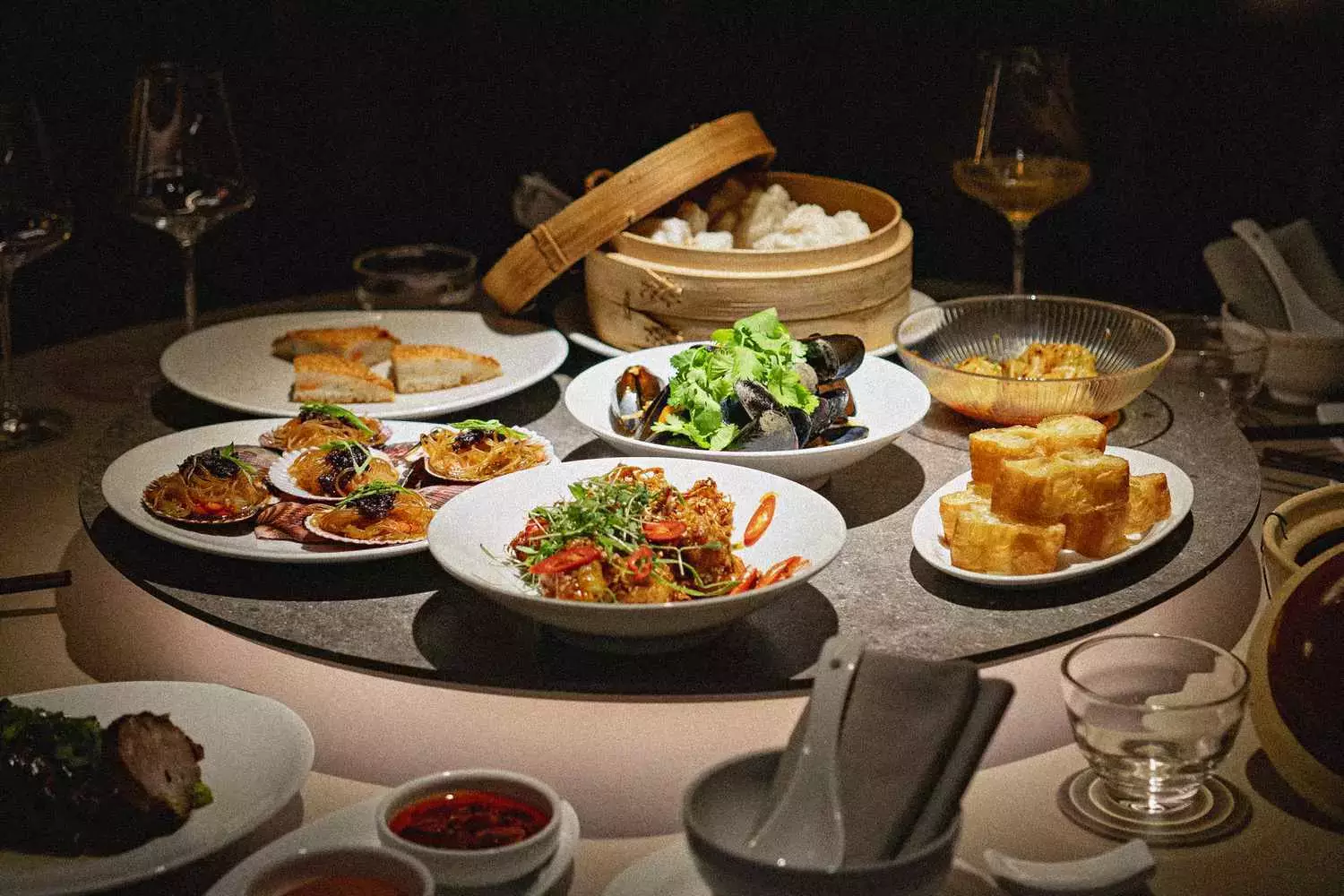Copenhagen has long been celebrated as a bastion of New Nordic cuisine, known for its focus on local ingredients and seasonal dishes. However, a dynamic cultural shift is reshaping the city’s culinary landscape, introducing a vibrant fusion of flavors that transcends traditional boundaries. The emergence of restaurants that embrace diverse culinary heritages signals an exciting trend in the Danish capital, prompting a rethinking of what fine dining can be.
A Taste of the Unexpected
Nestled in the heart of Copenhagen, Goldfinch restaurant immediately captures attention with its innovative menu and stylish décor. Here, patrons are greeted not with the usual sourdough and Nordic butter arrangements, but instead with an enticing array of Cantonese delicacies. The atmosphere — characterized by plush black leather booths and striking cherry red barstools — invites diners to embark on a culinary journey that feels reminiscent of bustling eateries found in Hong Kong or Singapore. The distinctive air of Goldfinch offers a refreshing departure from the predictable echoes of traditional Danish dining.
Australian chef Will King-Smith and his Canadian Chinese partner, Megan Leung, opened Goldfinch after recognizing a significant gap in Copenhagen’s dining scene. King-Smith’s experience as head chef at Geranium, one of Denmark’s revered three-Michelin-star establishments, shaped his culinary sensibilities. Yet, what began as a foray into seasonal Nordic gastronomy transitioned into a quest for personal expression through the nuances of Cantonese cooking. Including cherished family recipes and the beloved XO sauce from Leung’s heritage showcases a heartfelt connection to both personal identity and culinary tradition.
The recent culinary landscape in Copenhagen is not simply about introducing foreign cuisines but rather recalibrating the narrative around what fine dining entails. Chefs who have honed their skills at some of the world’s prestigious restaurants are now pursuing their culinary roots, creating dishes that echo their unique identities. This cultural introspection is vital as it reflects the globalized world we live in, where food becomes a language of connection across generations and geographies.
Chef Youra Kim, who trained in the classical French techniques, discovered an emotional alignment with her Korean roots during her time at Noma. This experience ultimately led her to open the vibrant Propaganda Kitchen and Wine, where traditional Korean flavors are artfully integrated with Nordic ingredients. Delighting diners with dishes like crispy gochujang ribs and inventive tartare, Kim is reshaping the culinary narrative while offering the community a taste of her heritage.
Similar stories unfold across the city. Edward Lee, a former head chef at the acclaimed restaurant Jordnær, blends his Hong Kong and Australian background through his latest venture, Gaijin. With a tasting menu that showcases Japanese techniques and seasonal Nordic produce, Lee demonstrates how culinary borders can blur while still celebrating individuality.
Culinary heritage is profoundly tied to stories that echo through generations, and this spirit defines Jatak’s philosophy, founded by Canadian-born Jonathan Tam. His exploration of Cantonese and Vietnamese flavors juxtaposed with Danish produce not only honors his upbringing but also offers patrons an innovative dining experience. By sourcing local ingredients and employing traditional techniques, Tam introduces a new layer of sophistication to the concept of global gastronomy.
The narrative of Copenhagen’s evolving culinary landscape culminates in Kristian Baumann’s two-Michelin-starred restaurant, Koan. The fusion of Danish and Korean elements is epitomized in dishes that evoke memories of street food mingled with fine dining flair. His signature kkwabaegi, a savory doughnut paired with rich salted cream, embodies the joyful combination of cultural influences — a testament to Baumann’s journey and the broader movement underway in Copenhagen.
A Future Driven by Diversity
The merging of different culinary traditions is more than just a reflective process; it encapsulates a desire for diversity and exploration within Copenhagen’s gastronomic realm. As Danes become increasingly open to experimenting with flavors and textures, this culinary tapestry continues to evolve, drawing crowds curious about the unexpected combinations that shape the future of dining.
Restaurants like Goldfinch, Gaijin, Jatak, and Koan validate the changing narrative around what it means to dine in Copenhagen today. As the city embarks on a journey that embraces its multicultural influences, it simultaneously solidifies its position as a culinary capital, where creativity, cultural heritage, and innovation converge.
In a landscape often dominated by a singular narrative, Copenhagen thrives as a testament to the power of diversity in gastronomy—launching its dining scene into a better, more inclusive future. The evolving landscape of restaurants invites not only culinary enthusiasts but also curious gastronomes to relish the flavorful stories woven into each dish.


Leave a Reply